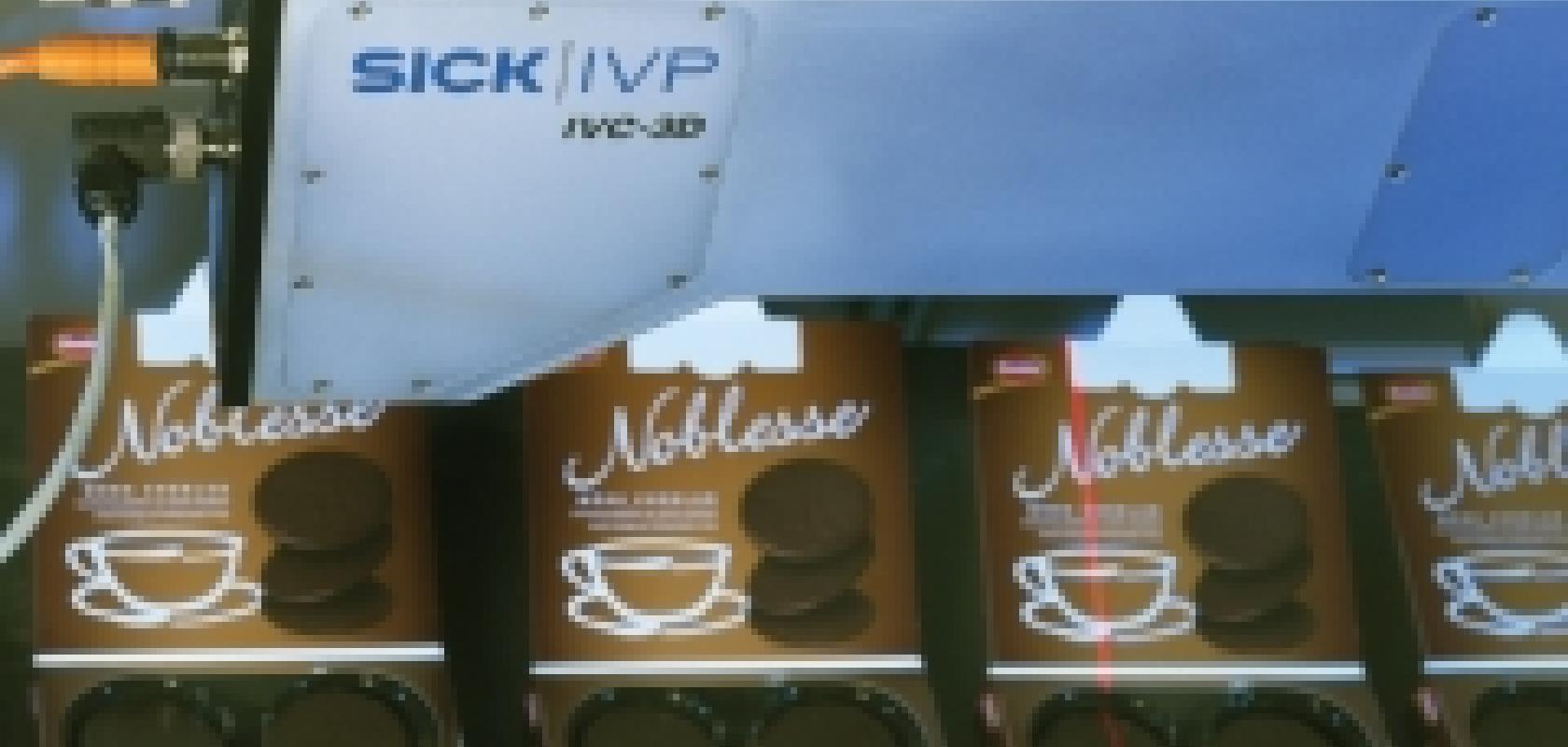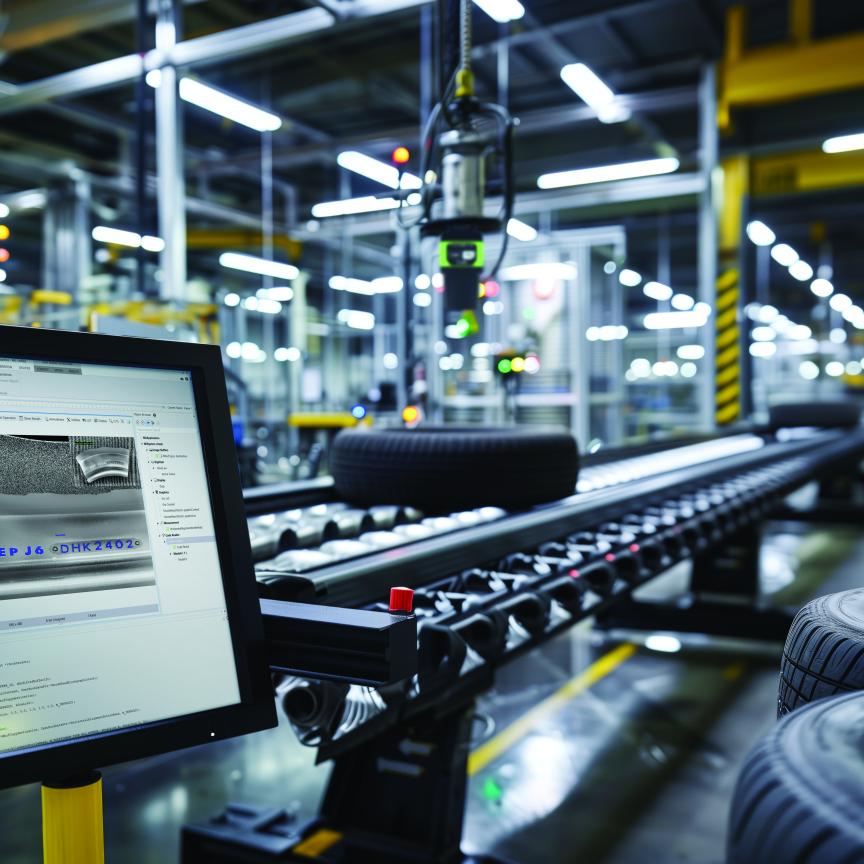The outbreak of foot-and-mouth disease in 2001 in the UK had many effects on agricultural policy, and one of the more lasting changes has been the requirement for the food industry to keep track of meat products from the farm, to the slaughterhouse, to the consumer. Each packet of meat contains this information, and supermarkets are ready to impose heavy fines on their suppliers if it has not been recorded correctly.
To ensure this doesn’t happen, meat producers need to check each individual packet, often at very high speeds – an application that lends itself ideally to machine vision systems. The problem is, most food manufacturers don’t have the engineering expertise to install these systems for themselves, or the programming experience to customise the vision software to the own particular needs. Vision manufacturers are now solving this problem by creating simple-to-use, all-in-one packages that have been tailored especially for packaging and labelling applications. These solutions typically contain an intuitive graphical user interface that requires very little prior experience to operate. And it’s not just food producers that are taking advantage of these systems – they are used to ensure that everything from shampoo bottles to expensive medical equipment meet the high standards that customers now expect from their products.
An example of this is the iLabel verification system, manufactured by Dalsa IPD and distributed by Firstsight Vision in the UK and Eire. This is currently being used by meat suppliers to ensure that the sticker is placed squarely in position on a meat packet and that it is the correct label for the product. Most meat products are now advertised with the country and region that they come from, so the iLabel system also checks that the slaughter and farmer IDs match this. Instead of requiring lengthy programming to detect faulty products, the software learns from example. The users simply define, within the graphical interface, the areas of the label that need to be verified, and then feeds the system with correct labels that will teach it what to expect from a good product.
No two labels are exactly the same, and the lighting in a factory environment can vary drastically during the day, so this training allows iLabel to learn what would, and would not, be acceptable variations in the way the packaging looks. The number of packages it needs to see before it can make an accurate decision varies depending on the extent of this variation, but typically it can be completed within 10 minutes. To check that the codes are present and carry the correct information, optical character recognition in the system compares the values on the packet with the values entered by the user in the software interface. The software can even be controlled remotely.
‘Machine vision has been used for a long time in packaging, but it needed a lot of experience,’ says Mark Williamson, director of Firstsight Vision. ‘iLabel removes machine vision knowledge from the application.’ iLabel was designed to verify the basic elements of packaging, such as the position of a label and the presence of important information, but it can’t check finer details such as the quality of printing. However, for many companies this is just as important. They spend a huge proportion of their budget on the marketing of products, and good presentation is important in maintaining a good company image.
This was a problem faced by chocolate manufacturer Manner, which creates high-quality chocolate wafers and biscuits in Perg, Austria. They needed a system that could reliably inspect 400 packages per minute for small faults such as dents or defects in the printing, as well as more obvious features such as the presence of the correct artwork.
In addition to producing its own brand products, Manner also produces biscuits for other companies, so the system needed to deal with a lot of variation, including 25 different packaging colours and 100 different texts in multiple languages. The company solved this problem by installing the In-Sight 5400 vision sensor from Cognex. Like the iLabel system from Dalsa IPD, the installation was so simple that it was performed by Manner’s own engineering team.
To inspect all the different characteristics of the packages, the image detected by the sensor was divided into 12 different areas using Patmax software from Cognex, each covering a different characteristic. By partitioning the problem in this way, the software could perform the inspection more quickly, allowing a higher throughput in the production line. Unlike many inspection systems, Patmax did not need the products to be aligned before they passed by the sensor, which also allowed a higher volume of products.
After installing the system, Manner found that its production had increased by five per cent. This was partly because faults such as dented packaging were detected before they could jam machines later in the production line. Reinhard Gasner, plant manager at Manner’s Perg factory, says: ‘If the conveyor belt is operating at a speed of, for example, 270 packages per minute, then just a few seconds of defective production means several dozen rejected packages. This is not just a question of cost; it also has a negative effect on the production flow. Problems like this are now in the past.’
In a similar application, Sick IVP’s IVC-3D smart camera has been used to check the presence of pralines in a chocolate box. The camera also checks that the pralines are in the correct place, and it verifies that they are the correct shape.
The camera works by calculating the 3D profiles of the chocolates, down to 0.04mm. This ensures that the height of the pralines in the box is uniform, so it’s unlikely that customers would ever be lucky enough to find an extra layer of chocolates in their box.
Chocolates inspected using Sick IVP's IVC-3D scanner
The IVC-3D’s performance does not depend on differences in contrast between the different objects, so it can inspect both dark and white chocolate pralines at a rate of three pieces per second. In many ways, these systems represent a trend for the simplification of vision technology for industrial applications. However, many applications have even simpler requirements than these situations, with barely any variation during the process. An example of this would be the inspection of the blister packs that hold pills and tablets. Applications like these barely seem to warrant a full imaging system, and yet photoelectric sensors do not give quite enough information for reliable inspection.
For cases like this, simpler vision sensors are used that provide a simple ‘OK’ or ‘not OK’ output with little detailed analysis of colours, codes and patterns. An example of this would be the VeriSens family of sensors from Baumer that analyses the contours of greyscale images to inspect the blister packages for the correct number and positioning of tablets within the pack.
This is a very robust method that can withstand variations in external illumination and environmental changes, and it only requires a few parameters to be set by the user about the geometrical features of the array of tablets. In particular, the blister packs can be shiny, and, together with the metallic conveyor belt, this can cause reflections that are difficult for most vision systems to handle. The simplicity of the contour analysis, however, means that this is not a problem. Using this method, up to 600 inspections can be made per minute.
Manufacturers have always been prudent about ensuring that only products of the highest quality reach customers, but new, simpler vision equipment now means that automated inspection is open to companies that previously couldn’t have afforded the expense or expertise of these systems. With vision manufacturers developing more advanced 3D vision all the time, often in more compact and cheaper cameras, it seems this trend will only continue, with easy-to-use and affordable systems increasing the quality and throughput of production lines.


